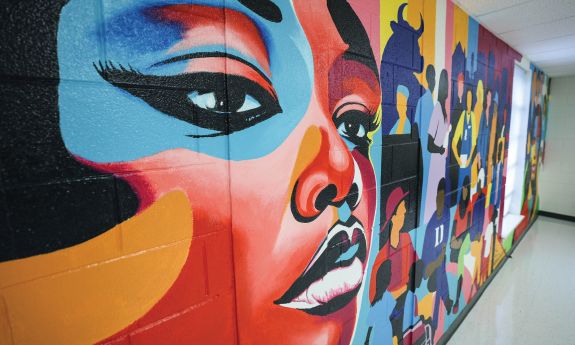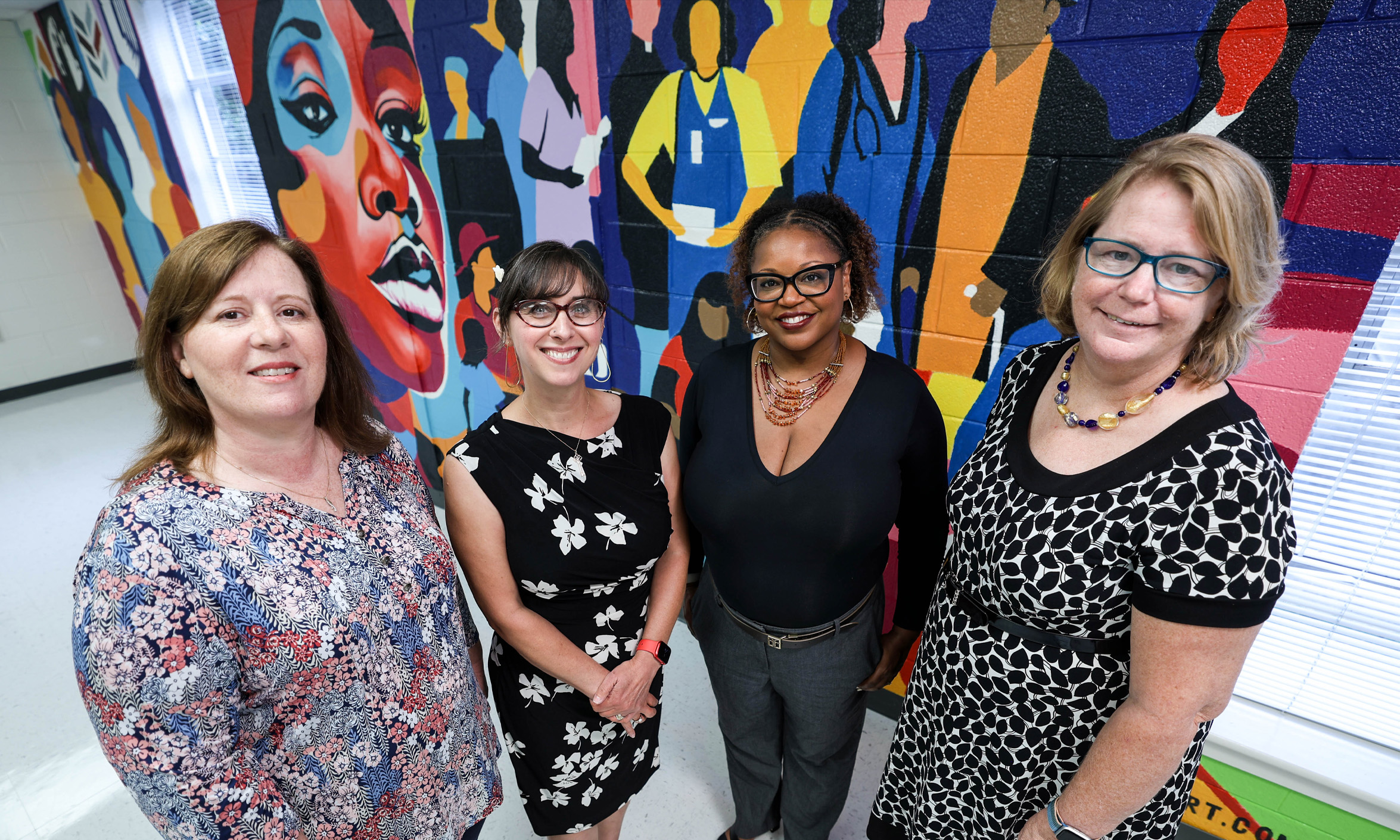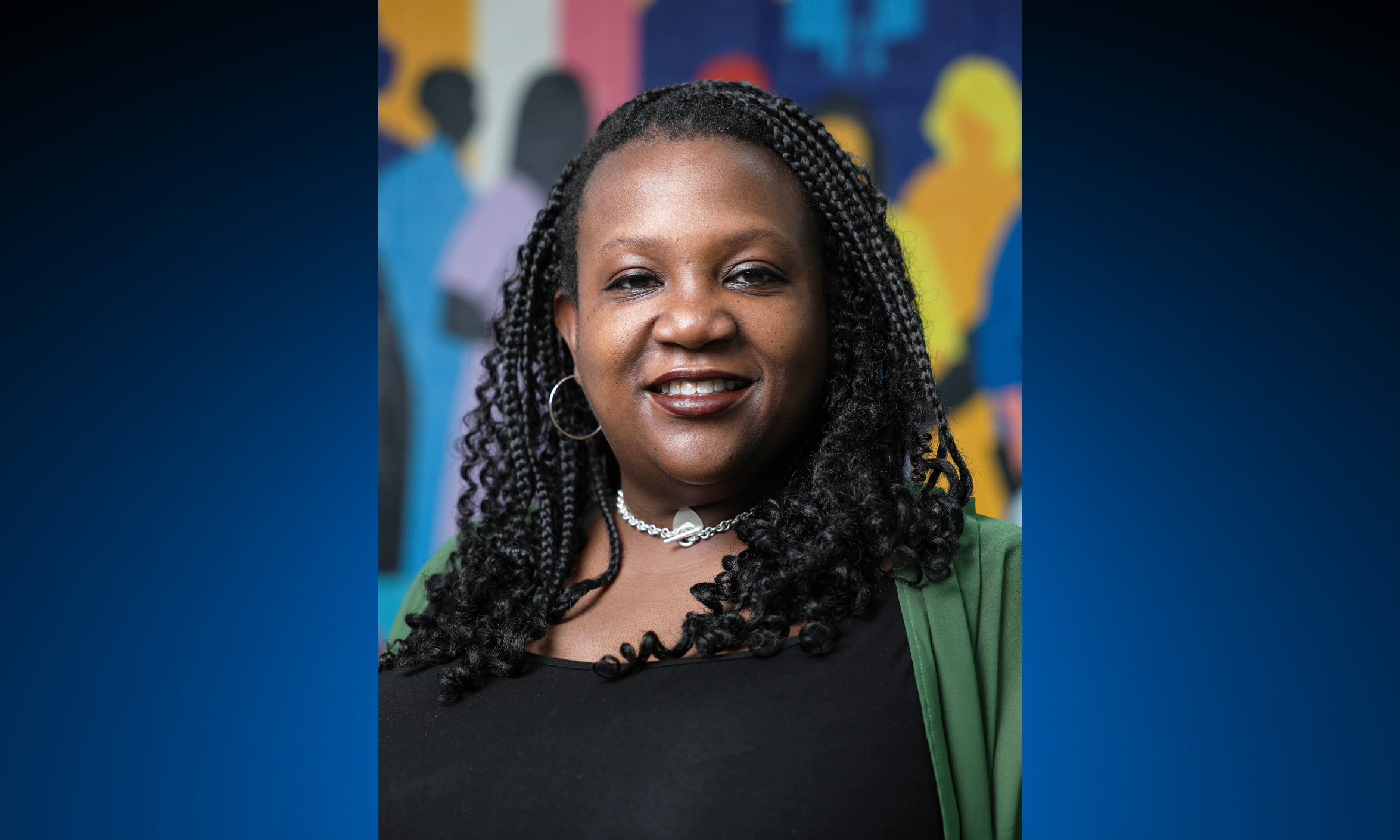Mural Symbolizes the Picture of Health Research at Duke
Three-year community initiative helps Duke bring more equity into clinical research


The Community Advisory Council’s final meeting, held in-person this summer in Duke Research at Pickett’s community room, gave Page his first look at Duke’s Research Equity and Diversity Initiative’s unifying symbol:
A mural by artist Max Dowdle filled a 34-foot-long wall with lush reds, purples and blues, abstract figures and Durham-specific imagery.
“It’s beautiful and so powerful,” said Page, Pastor of Antioch Baptist Church. “It’s so indicative of Durham and indicative of the work Duke is doing.”
Part of the Duke Clinical and Translational Science Institute (CTSI) and funded by a Duke Endowment grant, the Research Equity and Diversity Initiative, also known as READI, advanced health equity by strengthening connections between Duke and Durham communities underrepresented in clinical research.
Keisha Bentley-Edwards, Co-Director of CTSI’s Center for Equity in Research and the head of READI’s Community Engagement and Partnership Working Group, said demographic underrepresentation in research often leads to medications or interventions that don’t meet the needs of all patients.
“In a clinical or medical study, you should find out how something exists in the environments that people live in and how people respond to it in everyday life,” Bentley-Edwards said. “It should include the people who are most affected by the conditions you’re seeking to remedy.”
CTSI’s Community Engaged Research Initiative and Center for Equity in Research have long worked to address underrepresentation. READI was created in 2021 to help by generating lasting structures for strengthening community bonds.

Guided by input from the Community Advisory Council – which drew members from Durham churches, government and community nonprofits – READI helped researchers hone study plans, understand factors driving people’s reluctance to participate, and find community collaborators.
“This was great for researchers who don’t always have that opportunity to build direct relationships or connections, or be in the same spaces as these communities,” said CTSI Research Program Leader Kenisha Bethea, who helped guide READI’s work.
Over three years, READI funded three community-engaged research projects, shaped a community survey on Duke’s health care and research trustworthiness called Project Entrust, and helped develop My Duke Research, an online searchable directory of Duke clinical studies, trials and findings.
With READI’s three-year grant complete, much of the work will continue in other areas of CTSI.
And in the community room at Duke Research at Pickett Road – a facility created as an easy-to-access location for research participants – READI leaves a mural honoring Duke’s commitment to involve all of Durham in improving community health.
Send story ideas, shout-outs and photographs through our story idea form or write working@duke.edu.
Follow Working@Duke on X (Twitter), Facebook and Instagram and subscribe on YouTube.